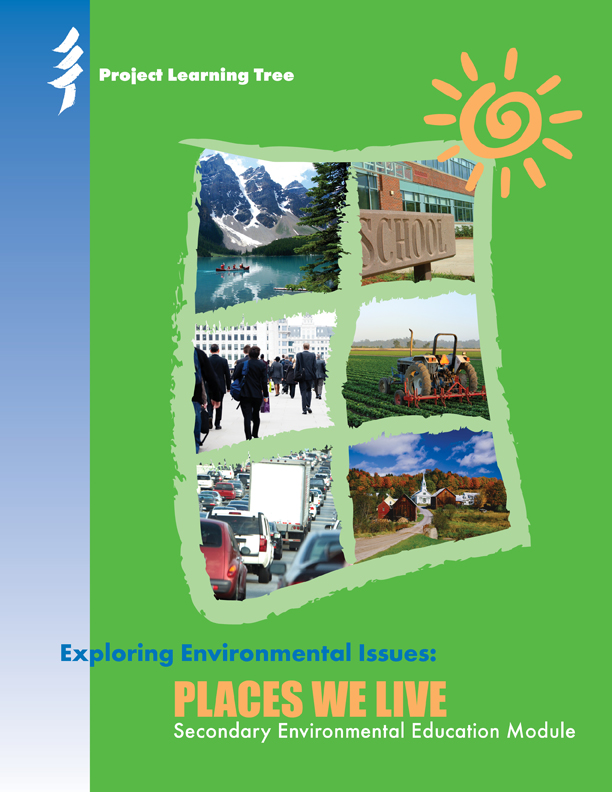
All communities – urban, suburban, small town, rural – are experiencing growth and change, which has an impact on each community’s environment. Exploring Environmental Issues: Places We Live provides educators with a useful tool for place-based education to help create a bond between young citizens and their communities. Through eight hands-on activities, students will explore current and future community environmental issues, enabling them to make informed decisions about those issues.
“This module contains powerful activities that encouraged my students to explore real-world problems and allowed them to work together to solve the problems.”
– South Carolina Educator
“The student interacted well with the readings- they were challenged with the new information and utilized some of their prior knowledge of their community.”
– New Mexico Educator
Student Lessons
Activity 1 – Personal Places
Students investigate and report on their connection with a special place and with their greater community.
Activity 2 – Community Character
Students explore community character and investigate ways that communities, including their own, are responding to growth and development pressures.
Activity 3 – Mapping Your Community Through Time
Student teams investigate the social, cultural, economic, aesthetic, and environmental components of their community to create map overlays and reports describing the development of their community through time.
Activity 4 – Neighborhood Design
Students explore the current layout of their neighborhoods, critically evaluate a variety of development options, and formulate ideas for guiding further growth in their communities.
Activity 5 – Green Space
Students investigate green infrastructure and native plant communities at the neighborhood, community, and regional scales. They also explore the dual needs to accommodate population growth and to protect green space and native plant communities.
Activity 6 – A Vision for the Future
In this activity, student teams develop and present a vision for the future of an area in their community.
Activity 7 – Far-Reaching Decisions
Students develop graphic organizers and creative presentations to illustrate how individual decisions can impact the local environment, as well as distant communities. They also measure their own ecological footprint.
Activity 8 – Regional Community Issues: The Ogallala Aquifer
Students investigate a regional issue as they adopt the roles of shareholders and debate solutions to the depletion of North America’s largest aquifer.
Standards Alignment
Exploring Environmental Issues: Places We Live provides a structured alignment to national academic standards. Visit our correlations page to explore connections between the Places We Live curriculum and STEM, the Next Generation Science Standards, and the Common Core State Standards for both ELA and Math.
Get the Materials
- Purchase a Print Guide. Available from Shop.PLT.org or through your PLT State Coordinator.
- Contact your PLT State Coordinator about scheduled in-person workshops in your area, or work with him or her to plan one for your unique setting! PLT’s professional development events are tailored for specific grade levels, academic standards, environmental topics, and formal and nonformal teaching situations. All our offerings are grounded in professional development best practices, designed to meet specific outcomes, and improve student achievement. Learn more.
Additional Resources
- Subscribe to our newsletter to receive notice of new resources that support this curriculum, plus ideas for engaging students with their environment in both a formal classroom and nonformal setting.
- To access all resources, including the Student Pages for each lesson, register (for free!) and log in.
Please remember that all PLT curriculum materials are protected under copyright law. Reproduce responsibly.
Click here for our Content Reprint and Adaptation Policy.


